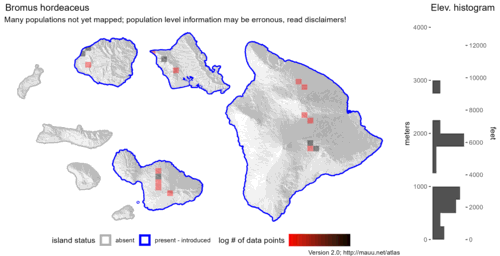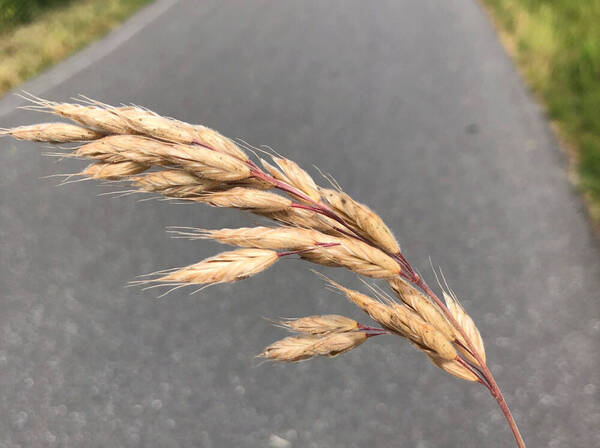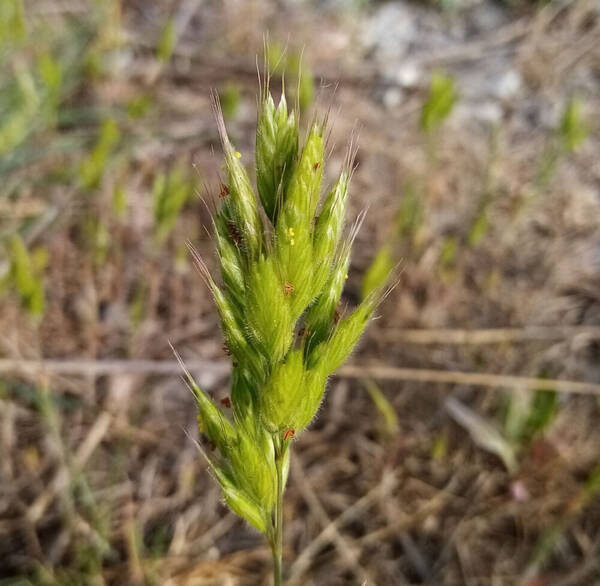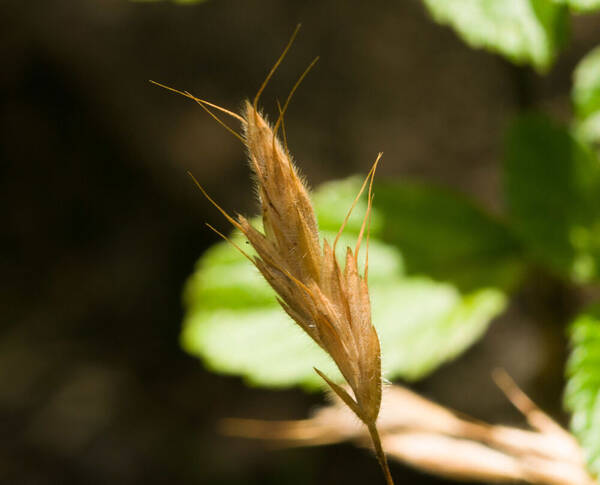Info
Subfamily: Pooideae
Genus etymology: Bromus = "food" [Greek] the ancient name for oats (Avena)
Species etymology: hordeaceus = "resembling Hordeum" [Latin]
Photosynthetic type: C3 (cool season)
Nativity: naturalized - accidental
First recorded in Hawaiʻi: 1909
Map

Inflorescence
 image credit: Skjold_Søndergaard
image credit: Skjold_Søndergaard image credit: Anton_Popovich
image credit: Anton_Popovich
Description
Plants annual or biennial. Culms 2-70 cm, erect or ascending. Lower sheaths densely, often retrorsely, pilose; upper sheaths pubescent or glabrous; ligules 1-1.5 mm, hairy, obtuse, erose; blades 2-19 cm long, 1-4 mm wide, abaxial surfaces glabrous or hairy, adaxial surfaces hairy. Panicles 1-13 cm long, 1-4 cm wide, erect, usually ovoid, open, becoming dense, occasionally reduced to 1 or 2 spikelets; branches shorter than the spikelets, ascending to erect, straight or almost so. Spikelets (11)14-20(23) mm, lanceolate, terete to moderately laterally compressed; florets 5-10, bases concealed at maturity; rachilla internodes concealed at maturity. Glumes pilose or glabrous; lower glumes 5-7 mm, 3-5-veined; upper glumes 6.5-8 mm, 5-7-veined; lemmas 6.5-11 mm long, 3-5 mm wide, lanceolate, chartaceous, antrorsely pilose to pubescent, or glabrous proximally or throughout, 7-9-veined, lateral veins prominently ribbed, rounded over the midvein, hyaline margins abruptly or bluntly angled, not inrolled at maturity, apices acute, bifid, teeth shorter than 1 mm; awns 6-8 mm, usually arising less than 1.5 mm below the lemma apices, straight to recurved at maturity; anthers 0.6-1.5 mm. Caryopses equaling or shorter than the paleas, thin, weakly inrolled to flat. 2n = 28.
(Description source: Barkworth, M.E., Capels, K.M. & Long, S. (eds.) 1993. Flora of North America, north of Mexico. Volume 24. Magnoliophyta: Commelinidae (in part): Poaceae, Part 1. Oxford University Press, New York. 911 pp. http://floranorthamerica.org/Bromus_hordeaceus )
Annuals; culms 1.5-6.5(-10) dm tall, glabrous or pubescent, sometimes only on nodes. Sheaths soft pubescent; ligule 0.5-2 mm long, finely erose-ciliate, pubescent or sometimes glabrous; blades flat, relatively narrow, 1.5-4 mm wide, sometimes involute, upper surface glabrous, lower surface with scattered hairs, auricles absent. Inflorescences paniculate, crowded, erect, 3-8 (-10) cm long, pedicels usually shorter than spikelets; spikelets 5-10(-12)-flowered, (11-)14-20(-23) mm long, soft pubescent to glabrous; first glume lanceolate, 5-7.5 mm long, 3-5-nerved, second glume ovate to lanceolate, 6-8.5 mm long, 5-7-nerved; lemmas 7-9(-10) mm long, 1.5-2.5 mm wide in side view, somewhat flattened, nerves relatively prominent, apex bifid, the teeth usually less than 2 mm long; awns 4-9 mm long, usually straight; palea about as long as lemma, 2-nerved, ciliate on the nerves, delicately membranous, adhering to caryopsis. Caryopsis dark brown, flattened, slightly curved, thin, linear to oblong, 5-6 mm long, 1-1.5 mm wide. [2n = 14, 28.]
(Description source: O’Connor, P.J. 1990. Poaceae, pp. 1481–1604. In: Wagner W.L., Herbst D.R. & Sohmer S.H. (eds.)., Manual of the flowering plant of Hawaiʻi. Vol. 2. University of Hawaii Press & Bishop Museum Press, Honolulu )